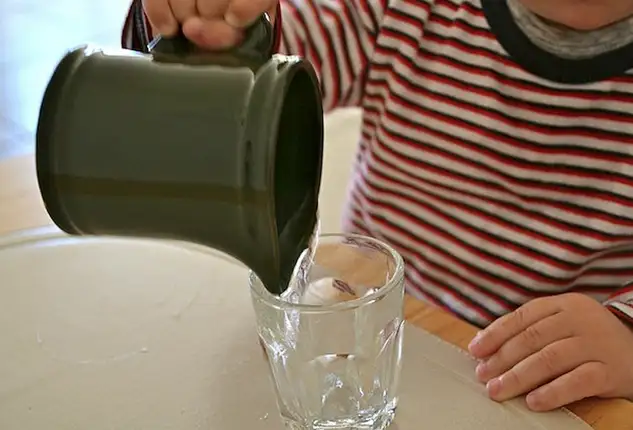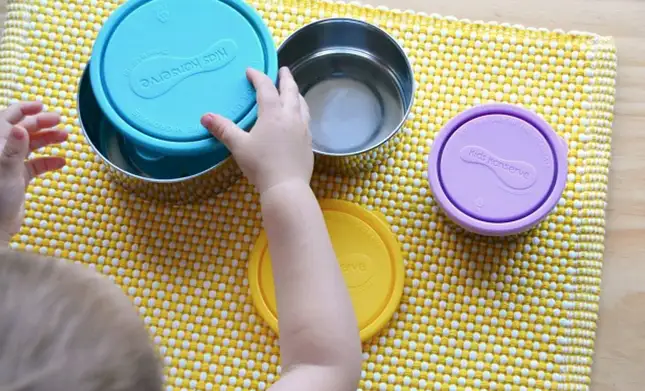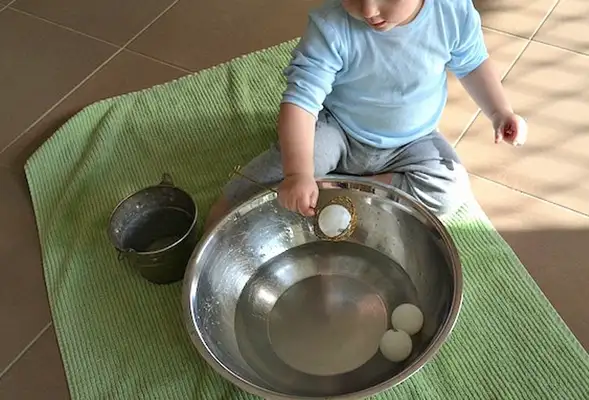
How to buy toys for 1 - 2 year olds?
Share
Children between the ages of one and two can no longer only lie or sit as they did from 0-1 years old. Now, they can walk independently and can do many things. At this stage, they no longer need adults to help them do everything as before. After walking, their abilities develop especially fast. They can learn to do most of the things that adults can do on their own with the assistance of adults. They can gradually participate in family life.
At this stage, there are actually many fun things in life for children to play with besides toys. I have divided the toys and activities that are appropriate for 1-2 year olds into the following categories.
1 Eye-hand coordination
2 Taking care of oneself
3 Taking care of the environment
4 Language
5 Music
6 Art
1 Eye-hand coordination
At this stage, we will continue to work on your child's eye-hand coordination. For the activities described below, parents will need to observe their child's ability to determine which level of activity is appropriate for them. Each toy is designed to serve the needs of a particular movement of the baby. As long as the toy meets that need, it is fine. Many can be homemade from materials already in the home.
During all of the activities mentioned in this article, parents should not interrupt if their child is concentrating. This is the stage where we begin to develop their concentration skills.
- Pouring water: Pouring water from one container to another

Children of this age are especially fond of water-related activities. We will have a small milk jug and a small cup for the child. The child will sit there and pour the water back and forth numerous times. You can also give him a small milk jug and several small cups, or two milk jugs. Various combinations are possible. Parents can decide how to set it up according to the materials available at home, the child's interests and abilities.
It is important to note that the small milk jug and small cups, both must be suitable for the size of the child's hand. If they are too big and heavy, the child's wrist is too weak to hold them, and the activity is meaningless.
As for safety, in the Montessori environment, we do provide glass ceramics for the child. However, parents can also provide plastic ones if they are unsure. Also, because the small cups are not large, even if the child pours water on the floor or table, it will not cause a safety issue.
If they pour water on the floor or table, we will say "the floor is wet, let's go get a mop and mop it together", "the table is wet, let's go get a rag and dry it together". Then we would walk with the child to get the mop or rag, show the child how to do it, and then let the child do it himself. After you're done, tell him, "Now you've learned to mop the floor/wipe the table. Next time it gets wet, you can go get a mop/rag and wipe it yourself. The next time it gets wet, the child will go get a mop and wipe it by himself. This gives him the opportunity to exercise his independence and confidence while learning to take care of his environment. More on this type of activity in Part 3, "Caring for the Environment.
- opening closing containers

- sorting
(Button classification, bean classification, all kinds of classification)


The shells collected on the beach can also be used to sort and match

- matching
(Socks color matching, box lid size matching, there are many things inside the home can be used to match)



- Locks

- threading

- Stickers

- Take a spoon and scoop something.

2 Taking care of themselves
At this stage, children can begin to learn how to take care of themselves. However, the activities described below, all must be demonstrated by the parents before the child does. Otherwise, the child does not understand how to use properly. Parents need to observe their children while they are doing it and assist them when they need help.
In addition, teaching children to take care of themselves and their environment is a great opportunity to teach them new vocabulary. There are many new items involved within each activity. Children will be interested in the name of each new item. Parents can hold the item, for example, point to a comb and slowly say "comb ~, comb ~, comb ~" three times. Let the child learn the new vocabulary.
- Comb your hair: prepare a small table with a small mirror on it and a small basket with several different combs.


- Wipe your nose: Keep a box of tissues on a small dresser and a trash can at the bottom of the table. Parents can teach their children how to wipe their own noses, throw away the tissues, and then wash their hands.

- Brush your own teeth

- Fill water

- Drink Water

- Washing fruits

- Peeling eggs


- Put dirty clothes in the basket

3 Taking care of the environment
Children at this stage are particularly interested in real life and like to imitate adults. We can provide them with tools that are appropriate for their height and size and demonstrate to them how to use them. At this stage of chores, we are not too interested in the quality and accuracy of the tasks that our babies complete. The emphasis is on participation and developing independence and confidence. When their physical coordination is enhanced, they will do better and more accurate through practice. Moms and dads don't have to be too eager to pursue results.
- Mopping and sweeping

- Window cleaning

- Putting dirty clothes in the washing machine
(Parents are on hand to assist. Ensure safety. These activities allow children to participate in family life and can develop their self-confidence and independence. They especially like to feel needed and like to help mom and dad.)

- Watering flowers
(Children love taking care of plants. And at this age there is a great love for all water-related activities.)

- Car Wash
(On a hot summer day, find a shady place, give your child a bucket of water and teach him to wash his toy car. Washing the car inside the bathroom at home is also possible. More exposure to water, soap and bubbles, in addition to developing the child's eye-hand coordination, but also to stimulate the child's senses.)

4 Language
This is the time when children are becoming more interested in language. We can teach the child the name of each object and make pairs together. Montessori language is taught in a "three step process".
(1) naming gives the name: "This is flower, flower, flower."
The adult points to the picture and says three times, "This is flower, flower, flower." Say it slowly and clearly. Give the name of the item.
(2) Recognition and association Recognition and association : "Please give me the flower"; "Please put the flower here."
Strengthen the child's memory by associating the name with the object. There is no need to pressure the child to say the name. By repeating the name of the object, the child remembers the noun.
(3) Recall the child to recall and say the name: "What is this?" "Which one do you want to put back first?"
The child has already remembered the name of the item, so we can ask the child to say the name of the item by asking questions.
These are the three steps of Montessori language teaching. One to two years old is fine with only the first and second steps. If you find that your child has a good grasp of the language, you can ask "what is this" in the third step. But if you find that your child can't remember the name, don't force him to ask "what is this" so as not to stress him out. When they get nervous, they will not be able to remember. This is a gradual process. Moms and dads usually find that the child is interested in something, point to the item and tell him the name, slowly repeat the name of the item three times. This is already a very good input!
- Language cards and object matching

5 Music
Music, both with the mood and the mind are very helpful elements. We can usually prepare small instruments at home to suit the size of the child. Form a band at home to play music with your child. Mom and Dad can also collect good classical music, children's music from around the world, and even music in languages they do not understand. The children hear good, especially rhythmic music, will not be able to dance along. In the past, in the parent-child class I led, we enjoyed playing African drumming music and we would have a little free dance time every day. The kids and mom and dad had a lot of fun.


6 Art
Drawing is a way for children to express themselves. We can prepare a variety of art activities related to drawing. For example, chalk, chalkboard, watercolor, drawing board, pencil, paper. Give children a space where they can draw freely without fear of getting dirty or easy to clean. It is also a very fun activity.
Doodling


Drawing

